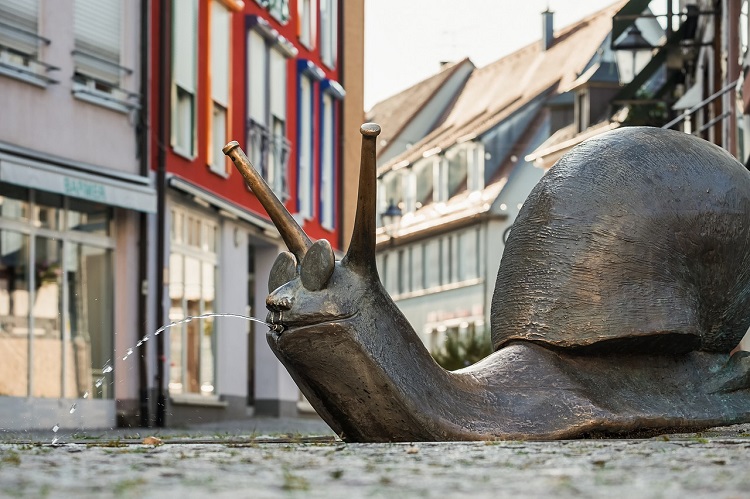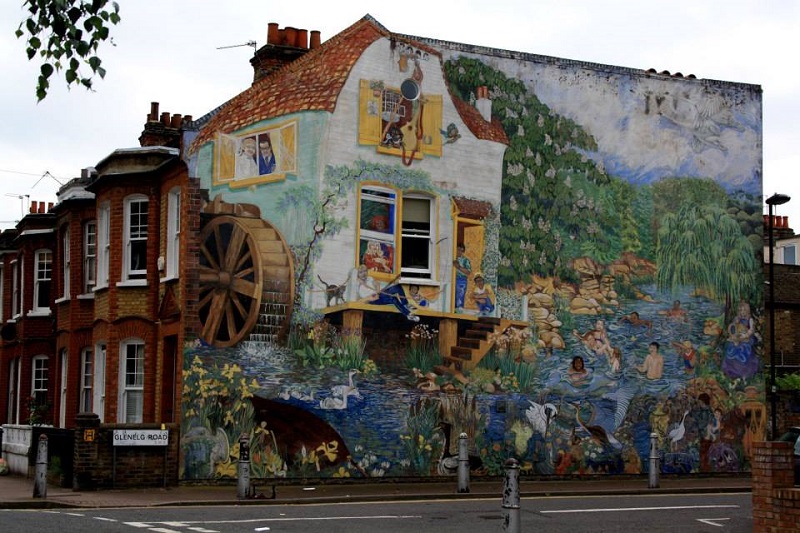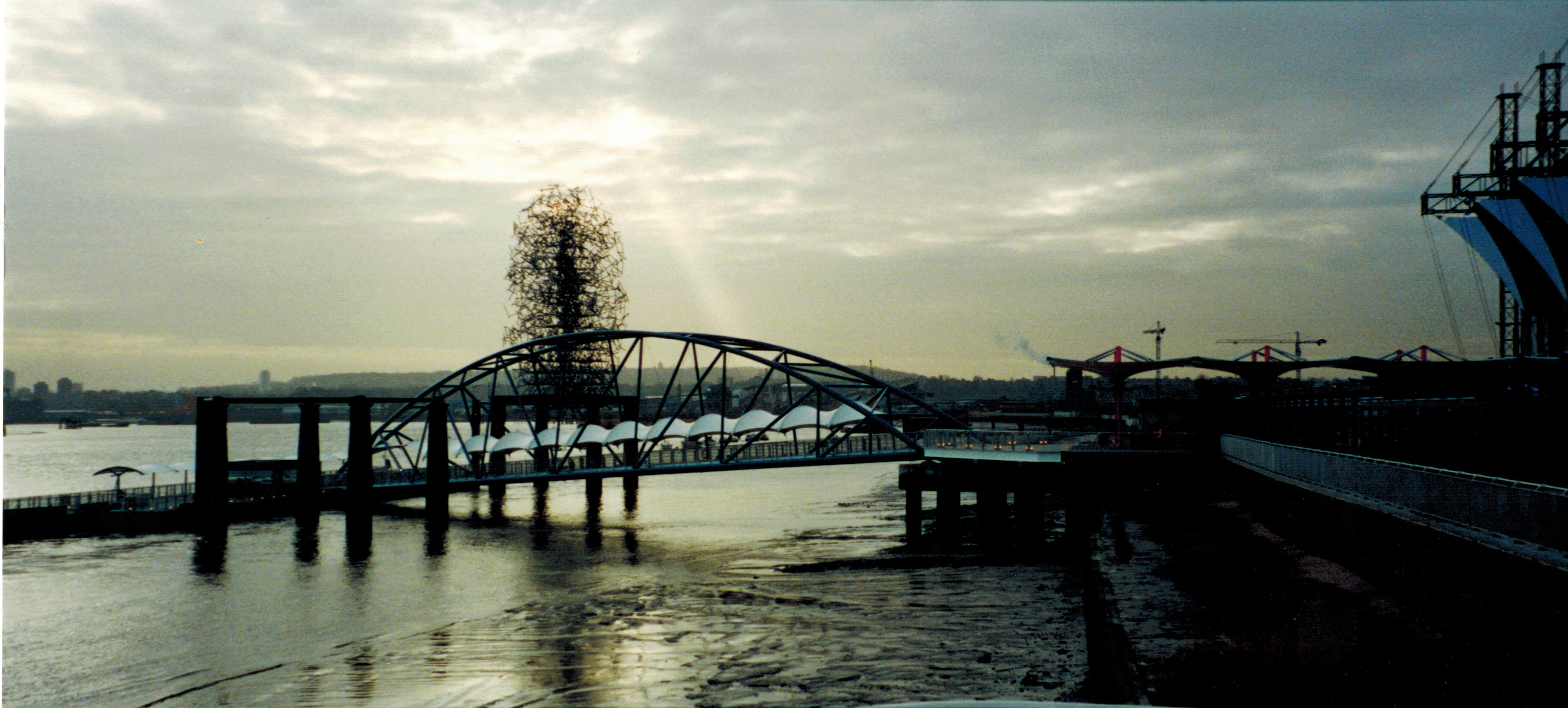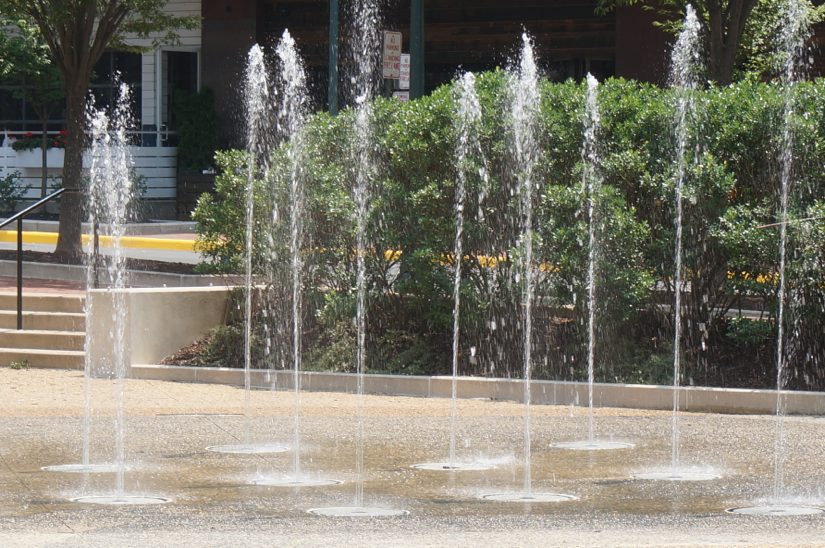Art in the built environment

|
Contents |
[edit] Introduction
Although the built environment can encompass both internal and external spaces, the term art in the built environment tends to be used for instances of art that are installed externally to enhance public spaces. These spaces may include town centres, squares, shopping precincts, streets, riversides, parkland and indeed anywhere the public are free to use and experience space.
Art is often commissioned by developers, local authorities or other land owners, or may be procured by arts organisations, often with funding from organisations such as the Arts Council.
The types of art that may be encountered in the built environment can include:
[edit] Painting
The main instances of painting in the built environment are murals, usually on a large scale, applied to walls, buildings, bridges and so on. An otherwise drab, end-of-terrace brick house, for example, may offer a prime opportunity for a mural due to its size and its conspicuous location.
Paintings and drawings may also be created by street artists who are sometimes seen drawing on the pavement (usually using coloured chalk) as a way of getting money from passers-by.
For more information see: Fresco and Trompe l’oeil murals

|
| House mural, Glenelg Road, Brixton. |
[edit] Mosaics
These are usually seen as large-scale murals although their labour intensive and costly nature tend to limit them to work commissioned by local authorities.
Historically, murals are often associated with Roman architecture, in particular floors.
[edit] Sculpture
This can include free-standing artworks in town centres, shopping malls and parks, but can also include sculptures attached to buildings, such as Barbara Hepworth’s on the John Lewis department store in London. It is probably the oldest form of art in the built environment and was in the past associated as much with the creation of monuments and public education as it was with beauty.
Statues commonly appear in historic urban environments, whilst abstract modern sculpture is a feature of many new developments and public spaces, often to the bemusement of passers-by.

|
| Anthony Gormley's Quantum Cloud on the Greenwich Peninsula. |
[edit] Landscaping
Streets, squares and other public thoroughfares can be designed to achieve an artistic effect that is both aesthetic and functional. Landscaping schemes may sometimes be associated with pedestrianisation that can include multi-coloured block paving, planting, seating, as well as other elements of public art. The aim is often to enhance user experience of public space but equally to entice shoppers into an area.
[edit] Fountains
The fountain is one of the oldest tools for enhancing public space, whether that is to provide a source of drinking water or for adornment. Fountains remain an important and much-used element, particularly in warm climates.

|
[edit] Graffiti
The origins of the term graffiti stem from scratches or markings, often inscriptions or figure drawings found on ancient sepulchres or ruins such as for example the Catacombs of Rome or at Pompeii. Graffiti tags or signatures are simpler often unsightly forms of graffiti, though from the late 1970s through to today more artistic graffiti pieces (or graffiti artists), can also be found. Graffiti is usually done without permission as an act of rebellion or public statement with some pieces being recognised and celebrated more formally. Today graffiti art is often associated in a genre of what might be termed street art.
[edit] Street Art
Street art, much like graffiti art is often produced in a public space without formal permission, though street art make take a variety of forms beyong spray cans and stencil images. For example, with the use of tiles, chalk drawings on paving, vinyl stickers, and three dimensional interventions.
[edit] Architecture
Architecture is not generally thought of as art, as its primary function is generally to satisfy the physical and spatial needs of a client rather than having purely artistic drivers.
Some styles of architecture are associated with artistic movements, such as the arts and craft movement, art deco, art modern, art nouveau and so on.
Trompe l’oeil is a technique that creates the illusion of reality. It is French for ‘fool the eye’ or ‘deceive the eye’. It has long been used by artists for paintings and murals, but can also be found in architecture where walls, ceilings, domes and other surfaces are painted with designs that ‘trick’ the observer into seeing other features such as windows, columns, stonework, ornaments and so on.
For more information see: Trompe l’oeil.
Architecture might also include elements of art such as; stained glass windows, frescos, bas-relief, friezes, gargoyles, and so on.
[edit] Related articles on Designing Buildings Wiki
- Art Deco.
- Art Moderne.
- Art Nouveau.
- Arts and craft movement.
- Bauhaus.
- Beaux Arts style.
- Coal holes, pavement lights, kerbs and utilities and wood-block paving.
- Conservation, climbing and graffiti.
- Floorscape in art and design.
- Julian Opie Art Wall CitizenM Tower of London Hotel
- Trompe l'oeil murals.
- Nuclear Dawn mural, Brixton.
- Placemaking.
- Trompe l’oeil.
Featured articles and news
Conservation of listed prefabs in Moseley.
Energy industry calls for urgent reform.
Heritage staff wellbeing at work survey.
A five minute introduction.
50th Golden anniversary ECA Edmundson apprentice award
Showcasing the very best electrotechnical and engineering services for half a century.
Welsh government consults on HRBs and reg changes
Seeking feedback on a new regulatory regime and a broad range of issues.
CIOB Client Guide (2nd edition) March 2025
Free download covering statutory dutyholder roles under the Building Safety Act and much more.
AI and automation in 3D modelling and spatial design
Can almost half of design development tasks be automated?
Minister quizzed, as responsibility transfers to MHCLG and BSR publishes new building control guidance.
UK environmental regulations reform 2025
Amid wider new approaches to ensure regulators and regulation support growth.
The maintenance challenge of tenements.
BSRIA Statutory Compliance Inspection Checklist
BG80/2025 now significantly updated to include requirements related to important changes in legislation.
Shortlist for the 2025 Roofscape Design Awards
Talent and innovation showcase announcement from the trussed rafter industry.
OpenUSD possibilities: Look before you leap
Being ready for the OpenUSD solutions set to transform architecture and design.
Global Asbestos Awareness Week 2025
Highlighting the continuing threat to trades persons.
Retrofit of Buildings, a CIOB Technical Publication
Now available in Arabic and Chinese aswell as English.
The context, schemes, standards, roles and relevance of the Building Safety Act.























